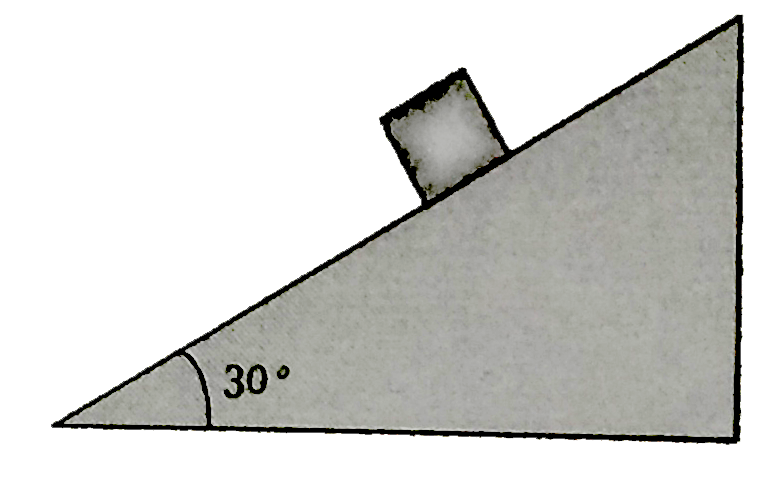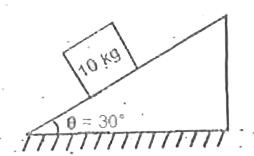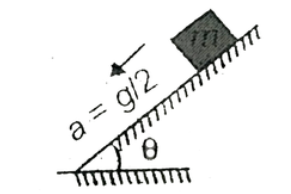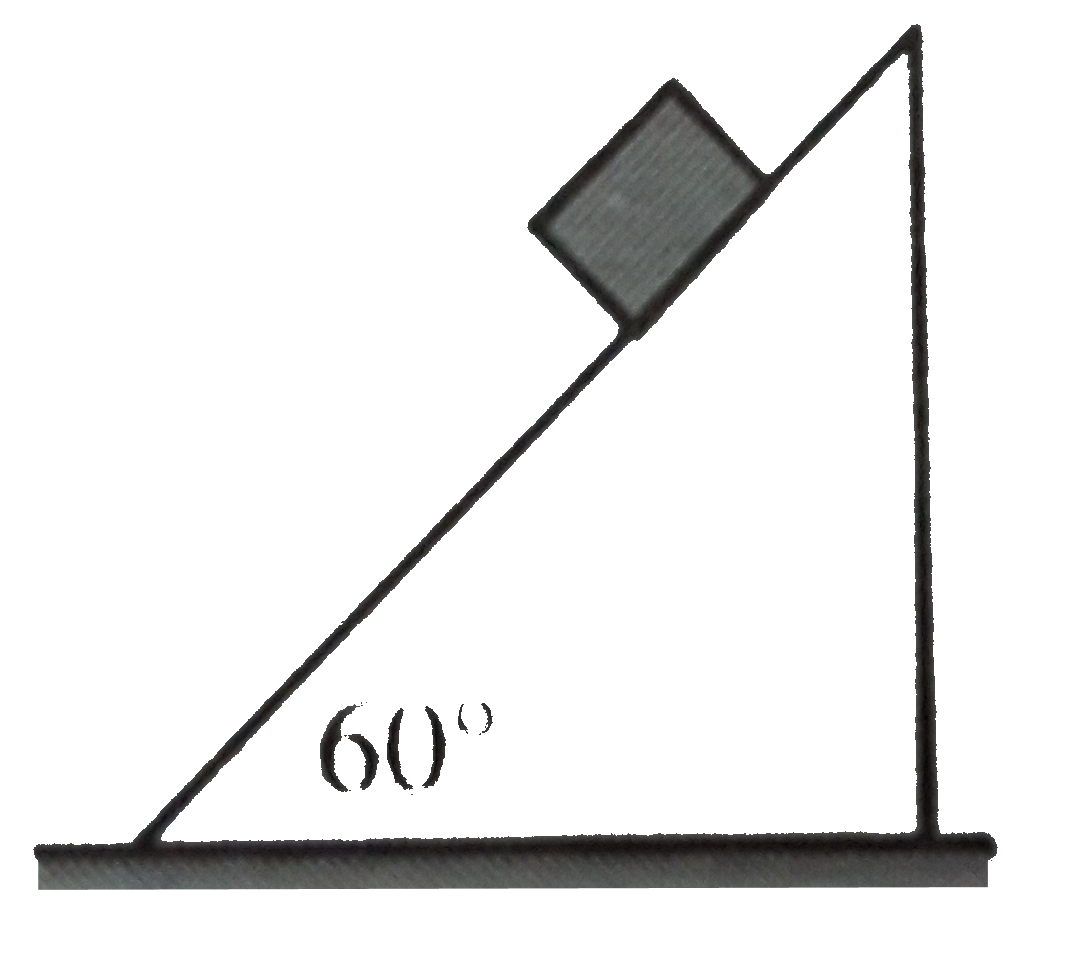A block of mass 5 kg and surface area 2m2 just begins to slide down an inclined plane when the angle on inclination is 30∘. Keeping mass same, the surface area of the block is doubled. The angle is which this starts sliding down is
30∘
60∘
15∘
none
The correct Answer is:A
To solve the problem, we need to analyze the forces acting on the block when it is on an inclined plane and determine the angle at which it begins to slide down.
1. Identify the Given Data:
- Mass of the block, m=5kg
- Initial surface area of the block, A=2m2
- Angle of inclination at which the block just begins to slide, θ=30∘
2. Understand the Forces Acting on the Block:
- The gravitational force acting on the block is Fg=mg, where g≈9.81m/s2.
- The component of gravitational force acting down the incline is Fdown=mgsinθ.
- The normal force acting on the block is FN=mgcosθ.
- The frictional force opposing the motion is given by Ff=μFN=μmgcosθ, where μ is the coefficient of friction.
3. Set Up the Condition for Sliding:
- The block just begins to slide when the downhill force equals the frictional force:
mgsinθ=μmgcosθ
- We can simplify this equation by canceling mg from both sides (since m and g are non-zero):
sinθ=μcosθ
4. Determine the Coefficient of Friction:
- At θ=30∘:
sin30∘=12,cos30∘=√32
- Plugging these values into the equation gives:
12=μ⋅√32
- Solving for μ:
μ=1√3≈0.577
5. Change in Surface Area:
- The problem states that the surface area of the block is doubled to 4m2. However, the coefficient of friction μ does not depend on the surface area of the block. Therefore, the condition for sliding remains the same.
6. Determine the New Angle of Inclination:
- Since the coefficient of friction remains unchanged, the angle at which the block will start sliding down the incline will still satisfy the same equation:
sinθ′=μcosθ′
- This means that the angle θ′ at which the block begins to slide will still be 30∘.
Final Answer:
The angle at which the block starts sliding down the incline when the surface area is doubled remains 30∘.
- Mass of the block, m=5kg
- Initial surface area of the block, A=2m2
- Angle of inclination at which the block just begins to slide, θ=30∘
- The gravitational force acting on the block is Fg=mg, where g≈9.81m/s2.
- The component of gravitational force acting down the incline is Fdown=mgsinθ.
- The normal force acting on the block is FN=mgcosθ.
- The frictional force opposing the motion is given by Ff=μFN=μmgcosθ, where μ is the coefficient of friction.
- The block just begins to slide when the downhill force equals the frictional force:
mgsinθ=μmgcosθ
- We can simplify this equation by canceling mg from both sides (since m and g are non-zero):
sinθ=μcosθ
- At θ=30∘:
sin30∘=12,cos30∘=√32
- Plugging these values into the equation gives:
12=μ⋅√32
- Solving for μ:
μ=1√3≈0.577
- The problem states that the surface area of the block is doubled to 4m2. However, the coefficient of friction μ does not depend on the surface area of the block. Therefore, the condition for sliding remains the same.
- Since the coefficient of friction remains unchanged, the angle at which the block will start sliding down the incline will still satisfy the same equation:
sinθ′=μcosθ′
- This means that the angle θ′ at which the block begins to slide will still be 30∘.
The angle at which the block starts sliding down the incline when the surface area is doubled remains 30∘.
Topper's Solved these Questions
Similar Questions
Knowledge Check
A block of mass m is at rest on an inclined plane. The coefficient of static friction is μ. The maximum angle of incline before the block begins to slide down is :
Atan−1(μ/m)Btan−1(μ)Ctan−1(μ/2)Dcos−1(μ)
The time taken by a block of wood (initially at rest) to slide down a smooth inclined plane 9.8 m long (angle of inclination is 30∘) is

View SolutionA block of mass 5 kg is at rest on a rough inclined surface. If angle of inclination of plane is 60∘, then force applied by it on block is
View SolutionA block of mass 10 kg is kept on a fixed rough (μ=0.8) inclined plane of angle of inclination 30∘. The frictional force acting on the block is

View SolutionA wooden block is placed on an inclined plane. The block just begins to slide down when the angle of the inclination is increased to 45°. What is the coefficient of the friction?
View SolutionA brick of mass 2kg begins to slide down on a plane inclined at an angle of 45∘ with the horizontal. The force of friction will be
View SolutionA block slides down a frictionless, inclined plane that makes a 30∘ angle with the horizontal. Find the acceleration of this block.
View SolutionA block of mass 5 kg slides down a rough inclined surface. The angle of inclination is 45∘. The coefficient of sliding friction is 0.20. When the block slides 10 cm, the work done on the block by force of friction is
View Solution


